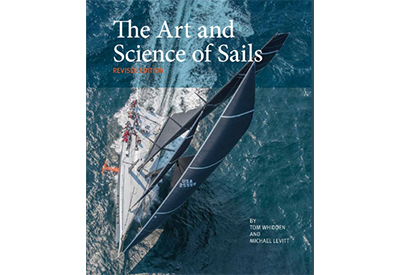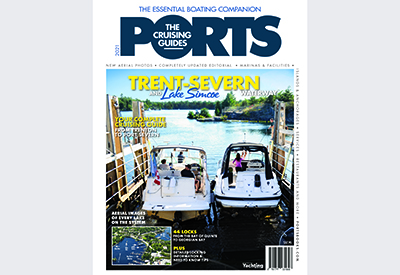The Art and Science of Sails

Oct 23, 2016
I must admit my bias upfront to this book review; it’s a book I devoured and read cover to cover. In the fading years of my sailing career I wish I had this fabulous resource long ago.
This book is the second iteration of the Art and Science of Sails written by a wonderful sailing journalist Michael Levitt with Tom Whidden a distinguished North Sails veteran. I took it on wanting to understand more about what drove those boats we raced and how we could squeeze one more ounce of speed.
Having sailed my entire career with a technical sailing genius, Hans Fogh, and crewed alongside another intellect, Steve Calder, only now do I appreciate all they spoke to on those long trips back to the dock after a days racing. Sure, there was more art than science back then but the art was rapidly becoming a true science.
Back in the day I felt I had to contribute more to those conversations or at the very least understand all the aspects being debated. My go to resource back then was The Theory of Wing Sections by CJ Marcharj, a dry technical approach that honestly was so technical one got lost easily.
The sport has changed dramatically and this book is a solid portrayal of the journey and change in approach, technology, vision and design. In essence it sets the record straight for many of us who were possibly too close the forest to see the real evolution and its rapid pace of change.
No longer do any of us look at just the sail or mast or rig; we need to look at the integration. In the old days one would tweak the sails all the time while today with a molded sail the test and measurement and shapes are built in up front. Perhaps sadly the artist approach might be gone but the sophistication and understanding it is what sailing is all about.
Whidden’s personal story is intriguing and it’s one all of us racing and cruising alike can relate to. Sailing was his passion and while he did not say it directly this passion contributed to his sailing and business successes.
I loved the approach, the setting of a baseline, the linkages to Hood and North and the contrasts of their inherent strengths, the working though the materials and the technical meat of the book in the transitioning from as they put it “from aerodynamics theory to practice.”
The continued references and detail is extremely well done and there is a gold mine in the matching images and drawings. It’s a heavy topic but written to engage regardless of your sailing expertise. Consideration of materials and material optimization, yarn strain, sail stress, pressure coefficients, defining mainsail shape and twist are all depicted and explained and illustrated so well that the content is not intimidating at all.
There is just a ton of information that any or all of us could use often. The ability to now truly understand the effects of too tight a trim, not enough flow (or circulation as they put it) and to have a resource that demystifies and teaches is a true jewel.
It’s often said one of the things that separate great books, especially ones that deal with topics that are technical in nature, from the pack is a style that truly engages and teaches. And from personal experience from reading this book I can say I have learned a lot.
Simply said this is a must book for your sailing library.
John Kerr
John Kerr is a the managing Partner at AD ASTRA Media publishing Canadian Yachting and its related platforms in association with Kerrwil Publications Limited. Kerr a lifelong sailor and competitive racer internationally competed with Hans Fogh and Steve Calder (mentioned in this book) winning an Olympic Bronze medal for Canada in 1984.





























